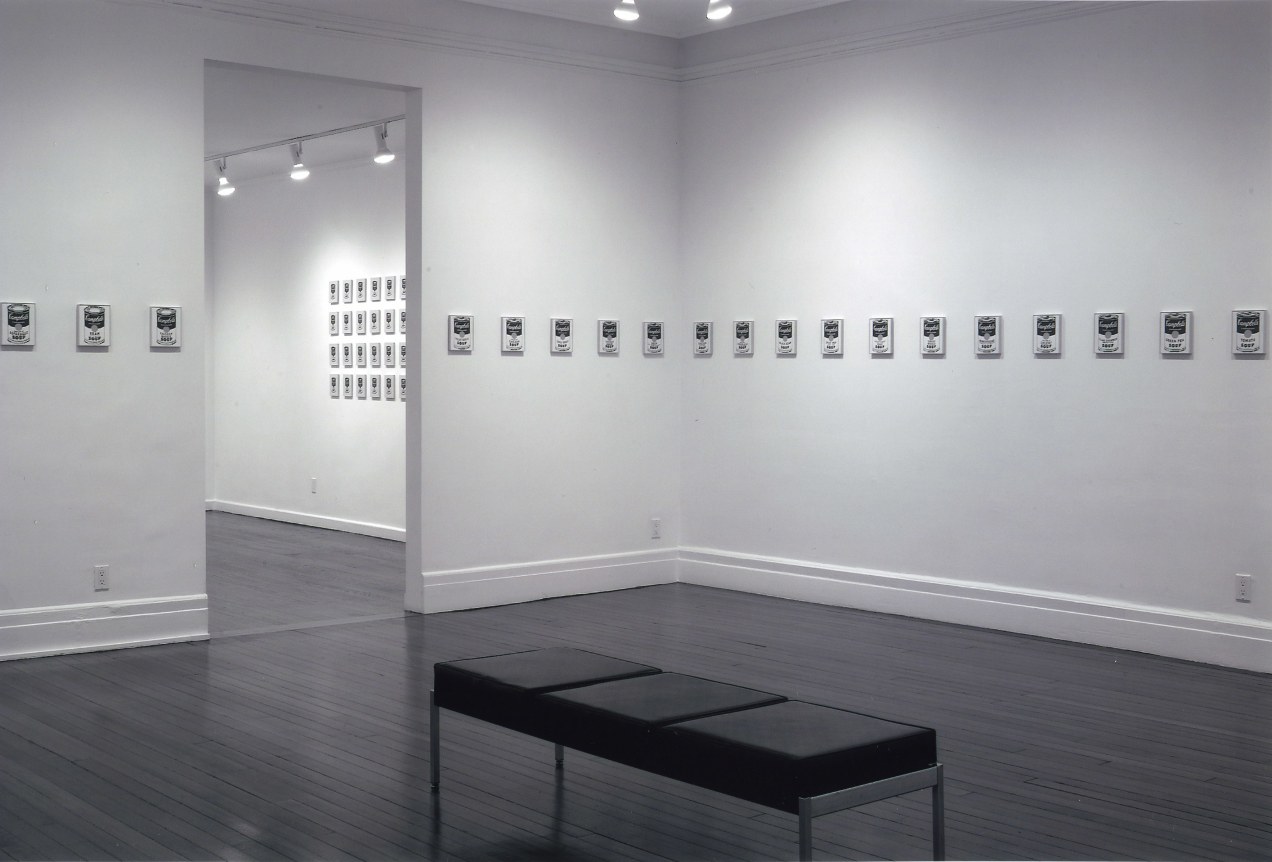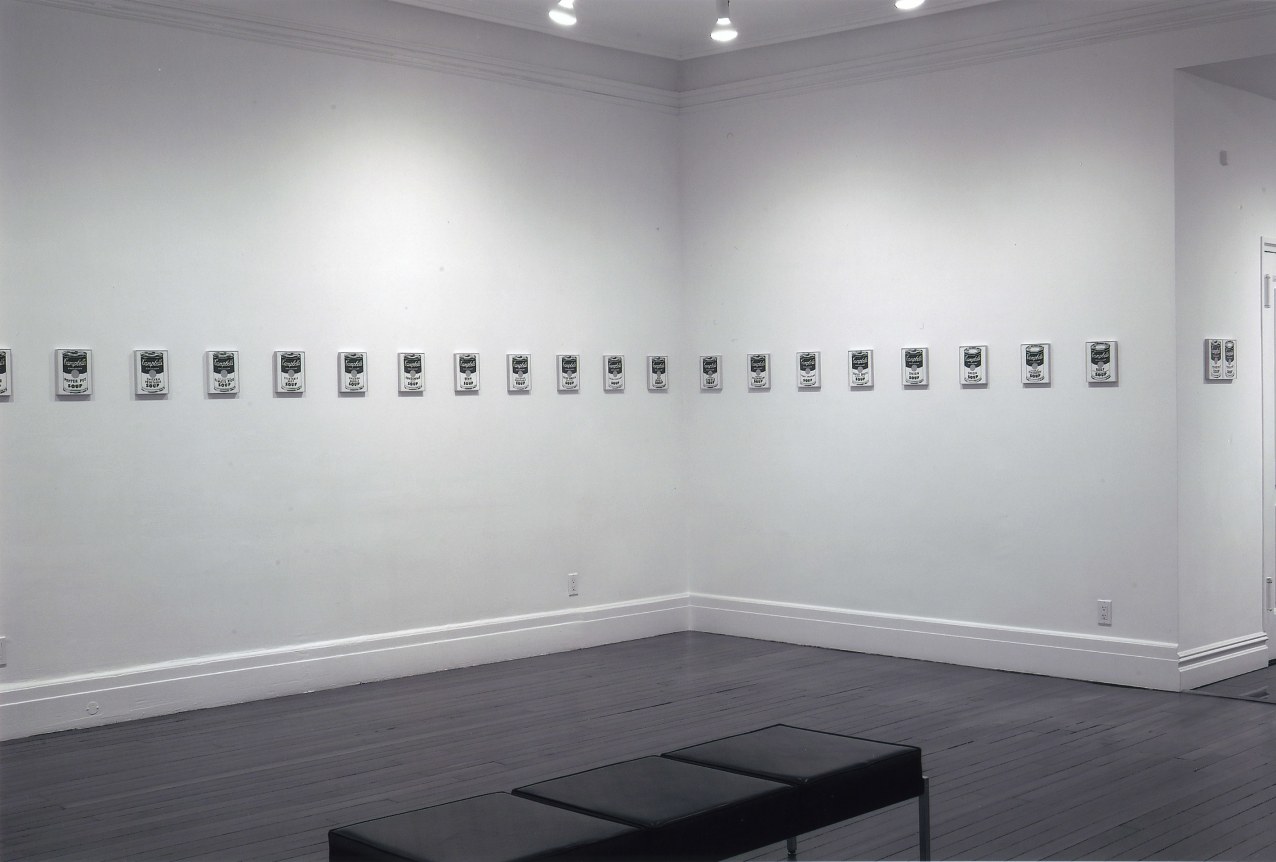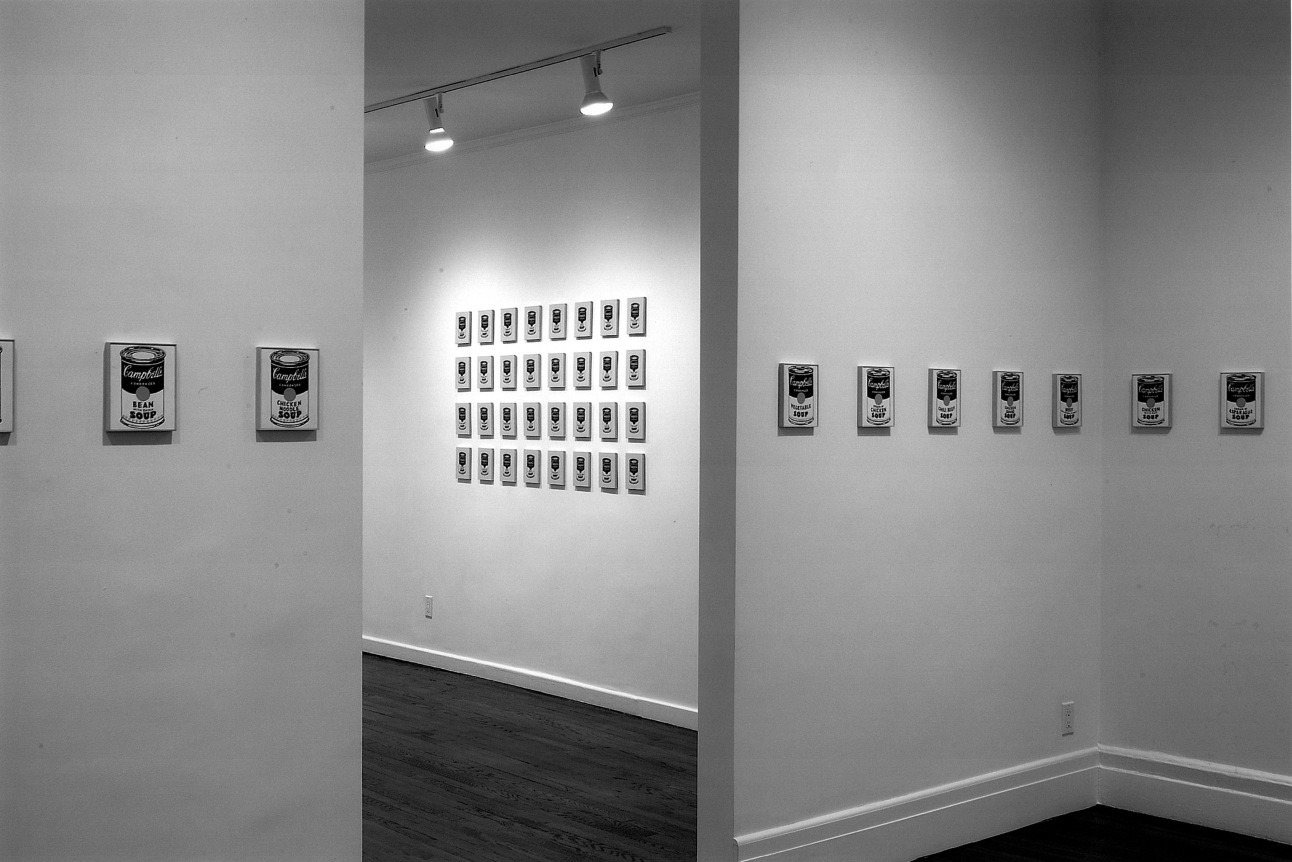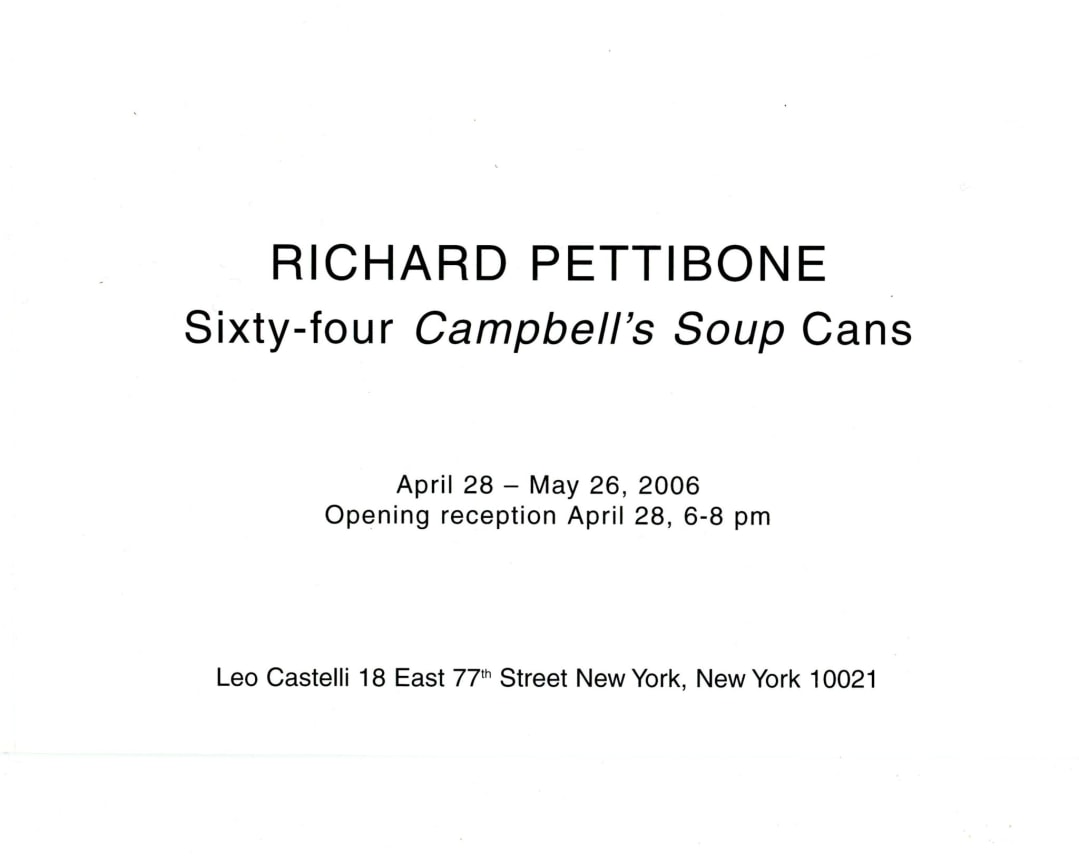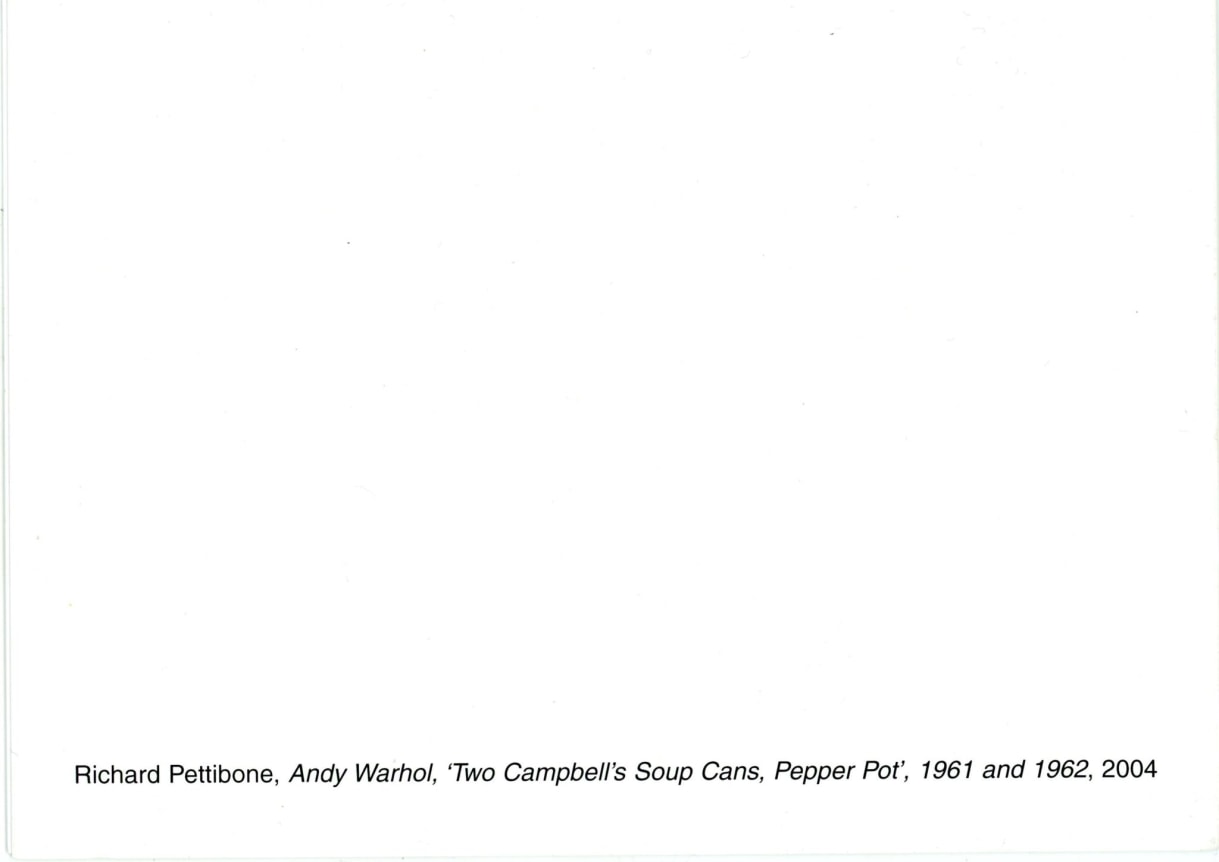Leo Castelli Gallery is pleased to present the first new works from appropriation artist Richard Pettibone since his retrospective at the Institute of Contemporary Art, Philadelphia. The show is comprised of sixty-four canvases each depicting an Andy Warhol Campbell’s Soup can.
As followers of Richard Pettibone’s work know, his fascination (love?) of Warhol’s work has been going on since the 1960s. In 1965 Pettibone took a trip from California to New York. He called up Andy Warhol at the Factory and Warhol told him to come over. Upon seeing mostly appropriations of his own work, Warhol immediately understood, and said ‘These are funny. Let me call Leo.’ As Pettibone says, ‘He was already copying, so why not copy the copy?’
Warhol created two distinct types of Campbell’s cans know as the ‘Ferus’ type and the ‘Monchengladbach’ type. The ‘Ferus’ type is know as such because this type of can was exhibited by Warhol in his show ‘Thirty-two Campbell’s Soup Cans’ at the Ferus Gallery, Los Angeles in 1962. Warhol based this can on the logo printed on the Campbell’s Soup can label. The second type of can is know as the ‘Monchengladbach’ type and was derived from an illustrated image reproduced in a magazine ad.
Richard Pettibone has made a set of the ‘Ferus’ cans which replicates the work ‘Thirty-two Campbell’s Soup Cans’ Warhol exhibited in 1962, now in the Museum of Modern Art’s collection and he has also made a set of thirty-two cans is based on the ‘Monchengladbach’ type. The soup cans in this exhibition are hung next to one another in a single line spanning the gallery’s circumference, the same way Warhol’s ‘soup cans’ were originally exhibited at the Ferus show in 1962.
Interestingly, these two cans are distinctly different when placed side-by-side. In typical Pettibone fashion, he has chosen to recreate an iconic Warhol image that most viewers probably did not realize had any variation. It is his subtle commentary on the works he chooses to re-present that makes his works not simply thought of as appropriation, but reinvention.
Warhol created the soup cans by projecting, tracing, creating stencils that were made from stenographs and methodically painting them to remove all trace of the artist’s hand. As Pettibone said in an interview with Ian Berry, “You don’t often hear about Andy being called and appropriation artist, but he was… I remarked that Andy’s soup cans are an appropriation, he just wasn’t appropriating an old master, he was appropriating a commercial artist.” Pettibone too began these cans tracing, stenciling, and then painting, but in these most recent works they are all painted by hand, which, in this case, he prefers.

